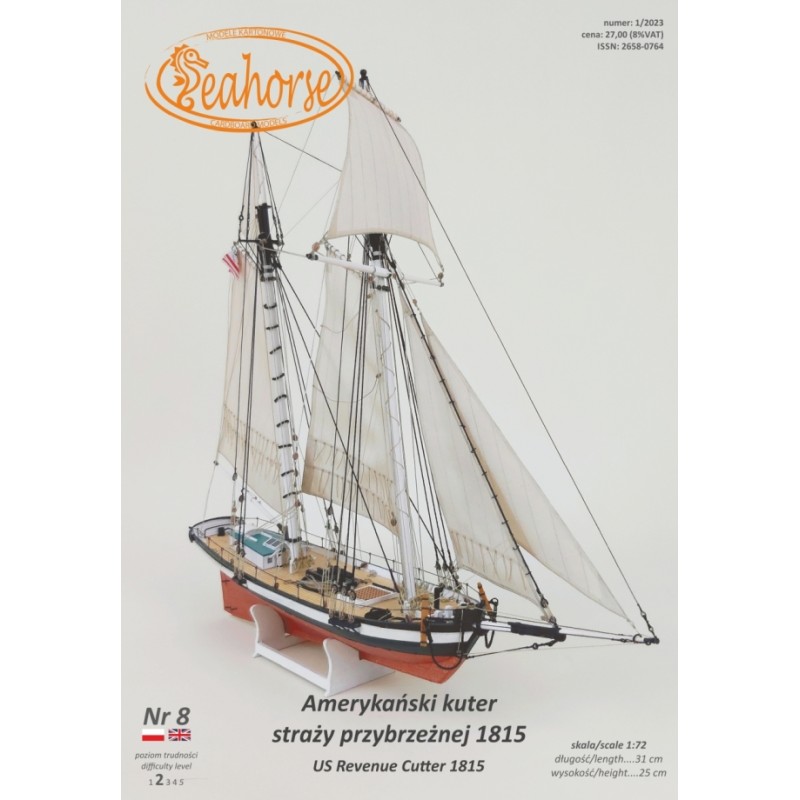









(zł27.00 szt)
Author: T. Król, T. Weremko
Scale: 1: 72
The model includes:
- 4 A4 pages of assembly drawings and construction description
- 4 A4 pages of parts and templates
templates for spars and sails
Model dimensions after assembling:
length: 31 cm
height: 25 cm
ATTENTION! The basic version of the model does not include hull copper plating parts.
Immediately after the American Revolutionary War, the newly established state had to improve its financial condition, which was to be helped by large income from tariffs on imports. Due to rampant smuggling, there was an immediate need for strong enforcement of the tariff laws. Accordingly, by an act of Congress on August 4, 1790, the United States Revenue Cutter Service was created as an armed customs service.
Initially, 10 cutters were built, which were assigned to patrol particular parts of the coast from New Hampshire to Georgia. The vessels names were: Massachusetts, Scammel, Argus, Vigilant, General Greene, Active, Virginia, Diligence, South Carolina, and Eagle.
During the conflict with France (quasi-war of 1798 - 1801) and the War of 1812, the American fleet was gradually enlarged by new vessels, including cutters and schooners. Over time, ships serving in the USRC Service gradually took over other missions, including missions of a military nature.
In 1815, William Dougthy designed three classes of customs cutters (31-, 51- and 79-ton), the smallest of which had a deck 48 feet long, 14 feet wide, and a draft of 5 feet. The largest 80-ton vessel had a length of 69 feet, a width of 19 feet and a draft of 6 feet. They were two-masted units with gaff-rigging (topsail schooner), armed with a single gaff-rigged carronade.
The developed model is the smallest vessel from William Doughty's design.
(K. H. Marquardt, "The Global Schooner," Conway Maritime Press 2003, p. 75).
Data sheet
You might also like